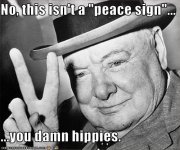Originally Posted by Hal Houle
There are only 3 angles for any shot, on any size table. This includes; caroms, single rail banks, double rail banks, 1, 2, 3, and 4 rail banks, and double kiss banks. Any table has a 2 to 1 ratio; 3 1/2 x 7, 4 x 8, 4 x 9, 5 x 10, 6 x 12. It is always twice as long as it is wide. The table corners are 90 degree angles. When you lay a cue from the side pocket to the corner pocket, you are forming an angle of 45 degrees. When you lay a cue from the side pocket to the middle diamond on the same end rail, you are forming an angle of 30 degrees. When you lay a cue from the side pocket to the first diamond on the same end rail, you are forming an angle of 15 degrees. When you add up these 3 angles, they total 90 degrees, which is the same angle formed by the table corners. The cue ball relation to object ball relation shot angle is always 15, 30, or 45 degrees. The solution is very simple. There are only 2 edges on the cue ball to aim with, and they are always exactly in the same place on the cue ball. There are only 3 exact spots on the object ball to aim to, and they are always exactly in the same place on the object ball. So, 2 edges on the cue ball, and 3 spots on the object ball; 2 x 3 = 6 which is the total number of table pockets. This means that, depending upon how the cue ball and object ball lie in relation to one another, you may either pocket the object ball directly into a pocket or bank it into any one of the remaining 5 pockets. Of course, the reverse is true. If the relationship of cue ball to object ball can only be a bank, so be it. There is never a need to look at a pocket or cushion while lining up the edge on the cue ball to the spot on the object ball. You have only those 3 angles Your only requirement is to recognize whether your shot is a 15, 30, or 45 degree angle. Recognizing those 3 angles can be accomplished in an instant by aiming the edge of the cue ball to one of the spots on the object ball. It will be obvious which object ball spot is correct. There will be no doubt. Any time either one of the 2 edges on the cue ball is aimed at any one of the 3 spots on the object ball, that object ball must go to a pocket. Choose the correct spot and the object ball will most certainly go to the chosen pocket. The top professional players in the game have always known about this professional aiming system, but they are a closed fraternity, and you are the enemy. Interested in where those spots are located?
The 2 places on the cue ball are the left edge of the cue ball when you are cutting the object ball to the left; and the right edge of the cue ball when you are cutting the object ball to the right. The 3 spots on the object ball are the quarters, and the center. The quarters and center of the object ball face straight at the edges of your cue ball, not facing toward the pocket. In other words, if you were on a work-bench at home, there would be no pocket, so you would just line up the edge of the cue ball straight to your target on the object ball. When you cut to the left for 15 degrees, aim the left cue ball edge at the object ball left quarter. When you cut to the left for 30 degrees, aim the cue ball left edge at the object ball center. When you cut to the left for 45 degrees, aim the cue ball left edge at the object ball right quarter. When you cut to the right for 15 degrees, you aim the cue ball right edge at the object ball right quarter. When you cut to the right for 30 degrees, you aim the cue ball right edge at the object center. When you cut to the right for 45 degrees, you aim the right cue ball edge to the object ball left quarter. If you'll just get down and aim your old way, you'll be close to where you should be aiming. Look to see (without changing your head or eye position) just where the cue ball edge is aiming at the object ball. You'll see that on every shot that the cue ball edge is always aiming at the same targets on the object ball. Remember, this system is for any shot on the table; banks, caroms, combinations, and so forth. The only shot remaining is the extreme cut for any shot over 45 degrees. Aim the cue ball edge to the eighth of the object ball (which is half of the quarter). Don't let the pocket influence you. Have a friend hold the ball tray between the object ball and the pocket, so you cannot see the pocket, and you'll see that those 3 angles will handle just about anything. Of course, you would have chosen the 15, 30, or 45 degree angle before your friend put the ball tray in place. It also makes it much more interesting if you don't tell your friend how you are pocketing the ball without seeing the pocket. Have some fun. For any questions, call me. Regards, POOL HAL.
Regards,
